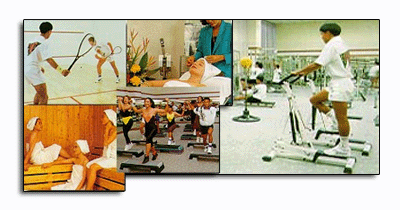Is Your Health Club Unhealthy?

Dr. Phillip Tierno says the gym is an unusually effective place for the transmission of germs. (ABC News)
It's the New Year's rush at health clubs all over the country. Every January, in some gyms, there are twice as many people working out as usual.
There are a lot of people looking to get fit. But they could also get something they don't want — germs. "Primetime" conducted an undercover investigation of a number of gyms, swabbing everything in sight — from the free weights to the locker rooms — and found germs practically everywhere.
Microbiologist Dr. Phillip Tierno says the gym is an unusually effective place for the transmission of germs. There are millions and millions of germs on human skin. So when anyone sweats, they come pouring off.
All those people, all that exposed skin and all that sweat, can create a perfect storm for spreading infections.
"You are not using that one machine exclusively for yourself. You're leaving that machine and someone else follows you and the germs that you leave behind," he said. "Eighty percent of all infectious disease is transmitted by contact."
It can be as simple as a sick person uses the machine, someone else uses it next, that person touches the same handrest and then touches his eyes … and he, too, can get sick.
"By the time the 50th person uses that machine, there may be potential pathogens there," Tierno said.
Generally Self-Policed
Germs in gyms are not exactly a priority for health authorities. For example, in New York or Los Angeles, the health department usually inspects gyms on a yearly basis.
Even then, they are generally inspecting pools for proper chlorine and filtration levels. Unless there is a specific complaint, no one comes out to inspect health clubs for germs.
But health club owners are aware that cleanliness is a priority. At the New York Health and Racquet club — which was not one of the gyms tested by "Primetime" — members are given clean towels, and there are antiseptic spray bottles and paper towel dispensers on the exercise floors.
Cleanliness is "first and foremost" in the mind of new members, said Jeff Bodar of the New York Health and Racquet Club.
"Primetime's" samples were tested by Tierno's lab at New York University Hospital. The swabs were put into petri dishes after leaving the gym — and soon bacteria was growing, sometimes in heavy concentrations.
On a set of dumbbells, "Primetime" found staphylococcus, streptococcus viridans, diptheroids and e-coli — the most common bacteria in human feces. On one exercise bike, "Primetime" found candida — the germ that causes yeast infections.
"Any article that is used by multiple people in quick sequence such as the dumbbells" is a high risk for germs, Tierno said. Other areas are seats where people may bike or sit down to lift weights.
But Tierno said the bacteria found in human feces, e-coli, was worst on the shower floor. "Germs do survive in the shower … on the walls and on the floor," he said. "I found them in hoards. Unbelievable quantity."
Still, Tierno was quick to note that most of these germs won't necessarily make someone sick. And there are precautions anyone can take. Don't touch your face while you are exercising. Shower after a workout. And most importantly, wash your hands before eating or drinking anything.
As to the germs in the shower, "You wear little slippers, you're OK," he said.
Disclaimer










